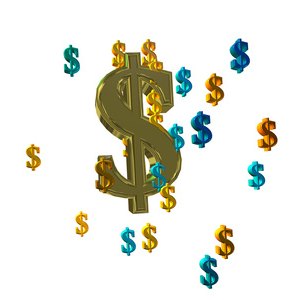
The majority of states in the U.S. and the District of Columbia charge retail sales tax. If you are a consumer, you should know how to calculate tax just to be informed. Business owners should also be aware of how rounding tax works, even if they usually rely on their cash registers or accounting software to do the calculations for them.
Sales Tax Overview
Income taxes can be confusing to the general public, with the different tax brackets and deductions and credits available to taxpayers. Retail sales taxes, which are levied when a consumer wants to buy something, are much simpler to understand. These taxes are charged based on the value of the invoice. In many cases, the consumer can see how much tax they are being charged on their bill.
This is not always the case, though. Some sales tax is hidden from consumers, such as in the case of federal and state taxes included in the prices of gasoline, alcohol or cigarettes. They are included in the price, instead of being added on when a customer buys these items. Either way, the tax portion is forwarded to the government.
State and Local Sales Tax
Only five states do not charge sales tax:
- Alaska
- Delaware
- Montana
- New Hampshire
- Oregon
Alaska allows local areas to collect their own sales taxes. It is the only state without sales tax that allows local sales taxes, according to the Tax Foundation.
Read More: Is There Sales Tax on a Gratuity?
States with the Highest Combined Sales Tax Rates
When you add the local and state sales taxes, you will pay the highest rates in:
- Tennessee (9.53 percent)
- Louisiana (9.52 percent)
- Arkansas (9.47 percent)
- Washington (9.21 percent)
- Alabama (9.22 percent)
States with the Lowest Combined Sales Tax Rates
- Alaska (1.76 percent)
- Hawaii (4.44 percent)
- Wyoming (5.34 percent)
- Wisconsin (5.46 percent)
- Maine (5.50 percent)
Example 1: Rounding Sales Tax
A customer in Kentucky buys paint and other items totaling $35.68 at a hardware store. All items are subject to state sales tax of 6 percent, and there is no local sales tax. You would calculate the sales tax on the purchase like this:
Multiply the total charges by the sales tax rate, expressed in decimal form.
(35.68)*(0.06) = $2.1408
Next, look at the sales tax calculated to the third decimal. Since the “0” in 2.140 is less than a half-cent (lower than five), you round down. The amount of sales tax payable is $2.14 and the total purchase is $37.82 ($35.68 + $2.14).
Read More: Difference Between Service Tax and Sales Tax
Example 2: Rounding Sales Tax
How much is the combined sales tax on a purchase of $75.92 made in Alabama, where the state tax rate is 4 percent and the purchase was in an area charging 5.22 percent in local sales tax (the average rate)?
First, you add the two sales tax rates together (4 + 5.22 = 9.22). Then, you multiply the total charges by the sales tax rate, expressed in decimal form.
(75.92)*(0.0922) = $6.9998
The sales tax calculated to the third decimal is $6.999. The third number “9” is higher than a five so you would round it up to the next penny. The correct sales tax calculation in this instance is $7. The total amount for this purchase is $82.92 ($75.92 + $7).
Read More: How to Round Tax on a Calculator
References
- Tax Foundation: 2020 Sales Taxes
- eFile: Income Tax History in the US: Taxucation
- Washington State Department of Revenue: Retail Sales Tax
- Tax Foundation. "State and Local Sales Tax Rates, 2020." Accessed June 16, 2020.
- Tax Foundation. "Sales Taxes on Soda, Candy, and Other Groceries, 2018." Accessed June 16, 2020.
- Tax Policy Center. "How Do State and Local Taxes Work?" Accessed June 16, 2020.
- New Hampshire Department of Revenue Administration. "Frequently Asked Questions - Tobacco Tax." Accessed June 16, 2020.
- Wyoming Department of Revenue Liquor Division. "Title 12 - Alcoholic Beverages," Page 19. Accessed June 16, 2020.
- Tax Foundation. "How High are Beer Taxes in Your State?" Accessed June 16, 2020.
- City of Colorado Springs. "2016 Budget in Brief," Page 14. Accessed June 16, 2020.
- Tennessee Department of Revenue. "Hall Income Tax." Accessed June 16, 2020.
- New Hampshire Department of Revenue Administration. "Completed Public Tax Rates 2019." Accessed June 16, 2020.
Writer Bio
Jodee Redmond is a freelance writer, blogger and editor who has been working full-time for over 15 years. She is a graduate of Centennial College and has worked as a tax consultant and a legal assistant. Her previous experience and boundless curiosity is a distinct advantage when writing about such varied topics as income tax, insurance, commercial property, business, construction, addiction, freelance writing and more.
